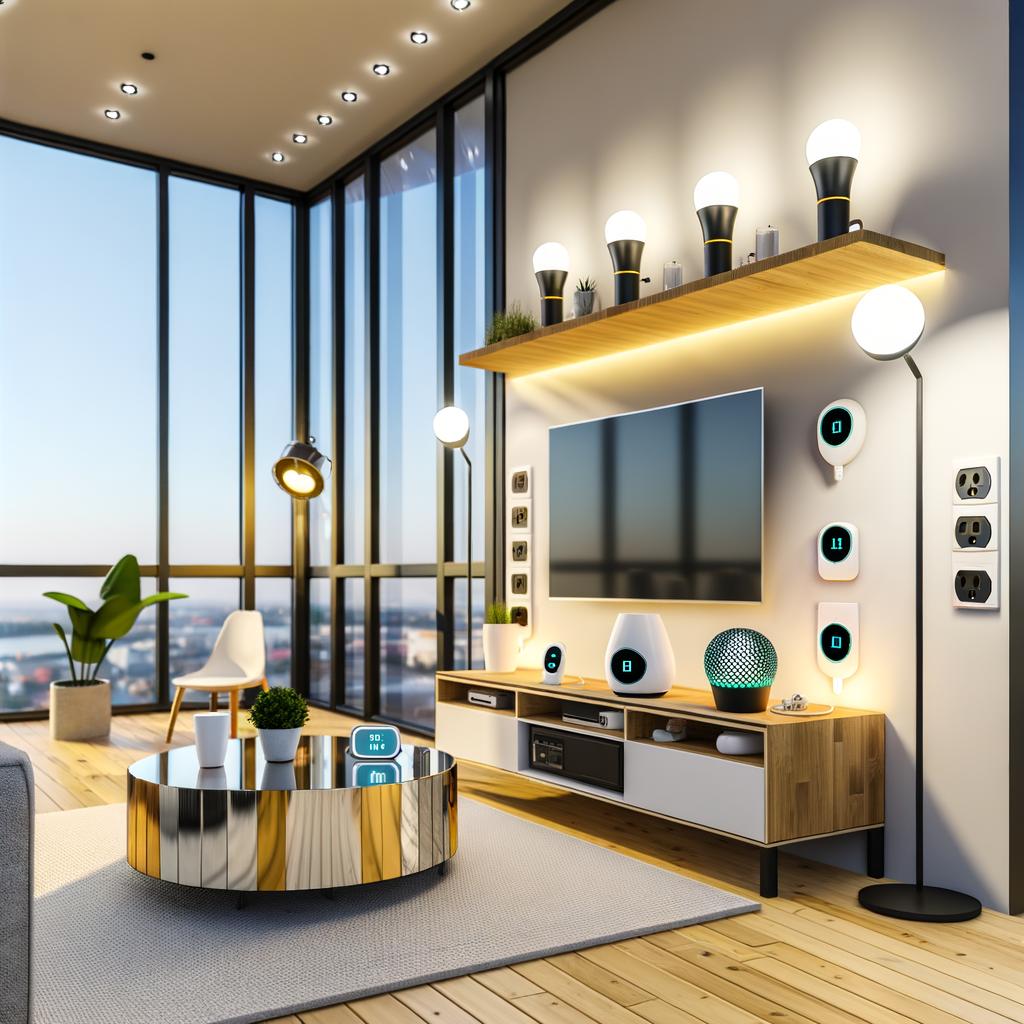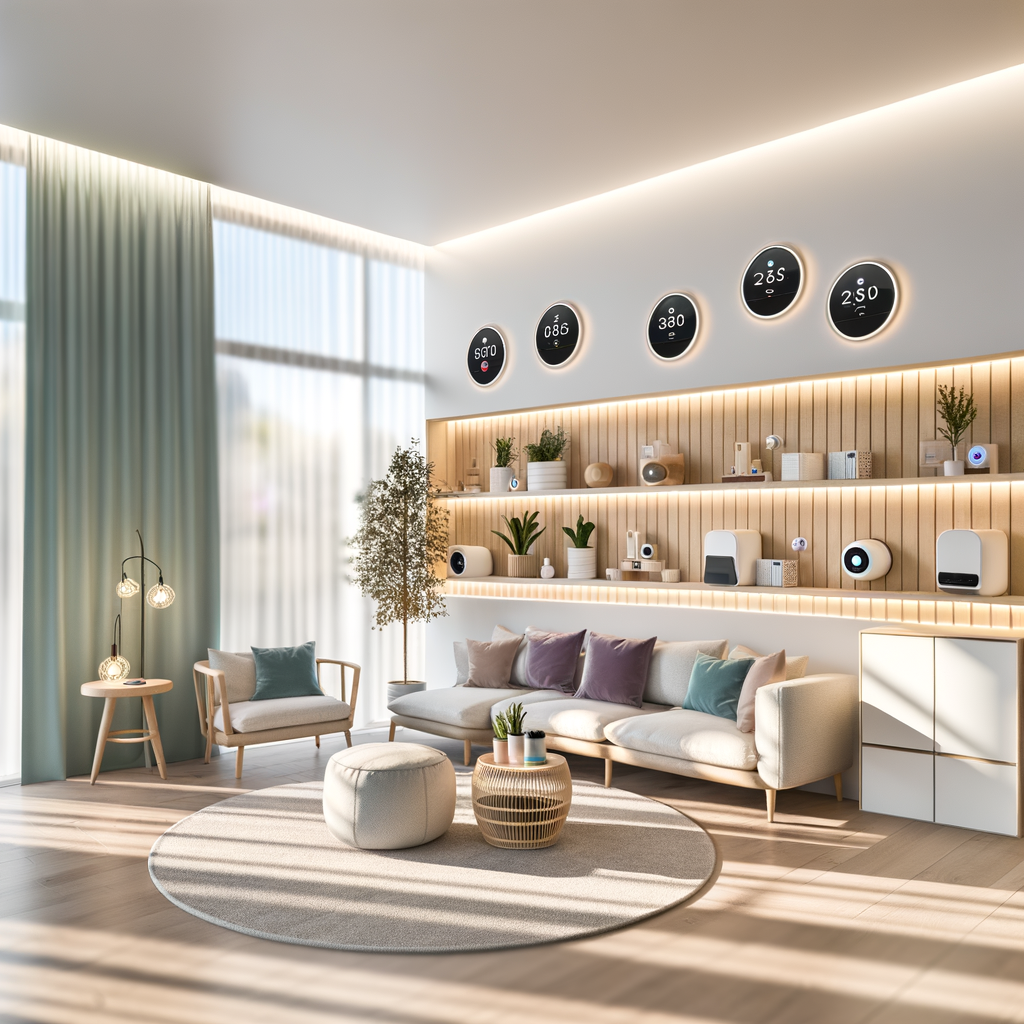How to Turn Your Rental Into an Energy-Efficient Smart Home on a Budget
Living in a rental doesn’t mean you can’t enjoy reduced utility bills, modern convenience, and sustainability. By carefully choosing energy-efficient smart home upgrades, it’s possible to transform any apartment or rental home into a high-tech, eco-friendly haven—without violating your lease or breaking the bank.
This guide will walk you through practical, renter-friendly steps to make your living space smarter, more comfortable, and environmentally responsible—all while staying on a budget.
Why Make Your Rental a Smart, Energy-Efficient Home?
Renters are often limited in what improvements they can make, but there are several benefits to investing in energy efficiency and smart tech:
- Lower bills: Smart devices help reduce electricity, heating, and cooling costs.
- Comfort & convenience: Automate tasks and customize settings for daily comfort.
- Eco-friendly: Lower energy consumption reduces your carbon footprint.
- Easy move-out: Most smart upgrades are portable and refundable deposits stay safe.
Start With a Smart Energy Audit
Before making any upgrades, it’s smart to assess where your energy is going:
- Review past utility bills to spot patterns and high-usage months.
- Look for drafty windows, always-on lights, or old appliances as problem spots.
- Consider using a plug-in energy monitor for precise tracking of power-hungry devices.
Armed with this info, you can focus your budget on the biggest savings opportunities.
Top Energy-Efficient Smart Home Upgrades for Renters
1. Smart Lighting That Saves Energy
- Upgrade to LEDs: Replace old incandescent bulbs with ENERGY STAR-rated LEDs for instant savings (use dimmable smart bulbs for more flexibility).
- Add smart bulbs or plugs: Use WiFi-enabled bulbs or smart plugs to schedule on/off times, automate sun-up/sundown routines, and control lights from your phone.
- Easy install, no wiring: Most smart bulbs screw into existing fixtures—no tools or landlord approval required.
Budget tip: Start with the most-used rooms (living room, kitchen). A single smart bulb can cost as little as $10-15.
2. Energy-Saving Smart Plugs
- Stop phantom loads: Many electronics use power even when “off.” Smart plugs can fully cut power to devices like TVs, coffee makers, and game consoles.
- Remote and scheduled control: Turn appliances on/off from anywhere or set them based on your routine.
- Track usage: Some models let you monitor energy consumption per outlet in real time.
Easy solution: No hardwiring—just plug into any standard outlet and connect to your WiFi.
3. Smart Thermostats and Temperature Controls
- Portable smart thermostats: Many models now require no hardwiring and can be easily installed and removed (great for window units or space heaters).
- AC and heater smart plugs: Use smart plugs or IR blaster controllers to make portable air conditioners or space heaters work with schedules and remote commands.
- Room-by-room efficiency: Smart radiator valves (for steam heat) or sensors help direct heat or cooling where it’s needed most.
Note: Always check with your landlord before swapping any thermostats hardwired to the wall.
4. Window Solutions for Better Insulation
- Smart window blinds: Automated shades open and close based on sunlight—ideal for regulating temperature and maximizing natural light.
- Insulating film or thermal curtains: Inexpensive and landlord-friendly—cut drafts and heat loss without permanent changes.
Bonus automation: Some smart sensors can detect sunlight or temperature, triggering your blinds or an alert.
5. Smart Sensors and Automation
- Occupancy sensors: Automatically turn off lights or appliances when rooms are empty.
- Door/window sensors: Alerts for drafts or when left open (you can even link to thermostat or smart fans to turn off when a window is open).
- Water leak detectors: Place under sinks or behind appliances to get instant alerts, preventing damage and water waste.
6. Voice Assistants and Smart Hubs
- Central control: Voice assistants (like Alexa or Google Assistant) tie your devices together and allow for hands-free control.
- No need for rewiring: Place these in any room for instant smart home capabilities without touching walls or major electrical systems.
- Routines and automations: Create “scenes” that combine multiple actions (“Leaving Home”: turns off all lights, powers down plugs, and adjusts AC).
Budget-Friendly Smart Home Tips for Renters
Start Small, Scale Up
- Begin with 1-2 smart plugs and a few LED bulbs for under $50.
- Add automation devices or expand room by room as budget allows.
Choose Easy, Removable Upgrades
- Look for devices that don’t require drilling or permanent changes.
- Keep original fixtures and packaging for easy removal and transport at move-out.
Watch for Deals and Refurbished Options
- Major sales (Black Friday, Prime Day) are great times to stock up.
- Certified refurbished smart home gear can cost 30-50% less with warranties.
Use Manufacturer and Utility Rebates
- Check ENERGY STAR’s rebate finder for potential discounts.
- Some power companies offer rebates for buying smart thermostats, LED bulbs, or even smart plugs.
Combine for Maximum Savings
The real power of a smart home comes from devices working together:
- Connect smart bulbs to motion sensors for automatic lighting control.
- Use routines to turn off all non-essentials when you leave home.
- Pair weather forecasts with your heating/cooling settings for optimal comfort and cost savings.
Making Your Upgrades Landlord-Friendly
Renters need to be careful not to cause permanent alterations. Here’s how to ensure your improvements stay lease-friendly:
- Portable is best: Choose devices that plug in or stick on, not those that screw into walls or cut wiring.
- Always ask first: For upgrades like a hardwired thermostat, get written landlord permission.
- Document everything: Take pictures before and after, and save original devices for easy reinstallation when you move out.
- Improve value: Some landlords may be amenable to minor, reversible upgrades that reduce energy costs or make the property more appealing for future tenants.
How Much Can You Save?
Here’s what a few simple smart upgrades can add up to in annual savings:
- LED bulbs: Replacing 10 incandescent bulbs may save $50–$100/year on electricity.
- Smart plugs: Cutting phantom loads on TV, entertainment, and kitchen can save $25–$50 annually.
- Basic automation: Using schedules and sensors to curb HVAC, lighting, and forgotten devices can yield another $100+/year in savings.
Many renters can see their investments pay for themselves within months—plus, you’ll benefit from added comfort and ease.
Integrating Smart Home Devices: DIY Tips
Setting up your rental for smart, energy-efficient living is simple and doesn’t require a tech background:
- Choose a main platform: Google Assistant, Amazon Alexa, and Apple HomeKit are the most common. Stick to one for the easiest integration.
- WiFi vs. Zigbee/Z-Wave: Most budget devices today use WiFi, so no need for extra hubs.




